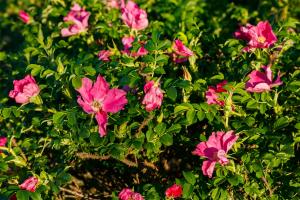When to Plant Black Gum Tree
Black gum tree is a native to North America, and it is a popular deciduous tree that is known for its ornamental value, abundant shade, and benefits it provides to the local wildlife. If you are planning to add a black gum tree to your landscape, it is important to think about the best time to plant it. This article will guide you through when to plant black gum tree, and the factors to consider when deciding on the right time for planting.
Choosing the Right Time to Plant Black Gum Tree
The best time to plant black gum tree is during the dormant season, which is typically in late fall or early spring, depending on your climate. Planting during this time ensures that the tree has plenty of time to establish its roots before the hot summer months or the cold winter sets in.
It is important to note that planting during the extremes of these seasons is not recommended as it may cause stress to the tree, which can result in poor growth and health of the tree. Additionally, avoid planting during periods of drought or extreme rainfall as it may also affect the growth and survival of the tree.
Factors to Consider When Planting Black Gum Tree
Before planting a black gum tree, there are several factors to consider to ensure the successful establishment and growth of the tree.
Firstly, consider the location of the tree in your landscape. Black gum tree prefers moist, well-drained soils that are acidic to neutral in pH. It does not tolerate compacted or poorly drained soils, so it is important to choose a spot with the right soil conditions.
Black gum tree also thrives in full sun to partial shade, so choose a spot that provides adequate sunlight throughout the day. Additionally, avoid planting the tree near concrete surfaces or buildings, as the reflected heat may cause stress to the tree.
Secondly, ensure that the tree is planted at the right depth. The root ball should be placed level to the ground, with the top of the root flare just above the soil line. Planting too deep can cause root rot while planting too shallow can cause the roots to dry out.
Lastly, provide adequate watering and fertilization during the establishment period. Water the tree frequently during the first year, ensuring that the soil remains moist but not overly wet. Fertilize with a slow-release fertilizer during the first year to provide essential nutrients for growth.
Conclusion
Planting a black gum tree can be a great addition to your landscape. By planting during the dormant season, choosing the right location and providing adequate care during the establishment period, you can ensure that your black gum tree grows and thrives for years to come.

 how many times do yo...
how many times do yo... how many planted tre...
how many planted tre... how many pine trees ...
how many pine trees ... how many pecan trees...
how many pecan trees... how many plants comp...
how many plants comp... how many plants can ...
how many plants can ... how many plants and ...
how many plants and ... how many pepper plan...
how many pepper plan...






























